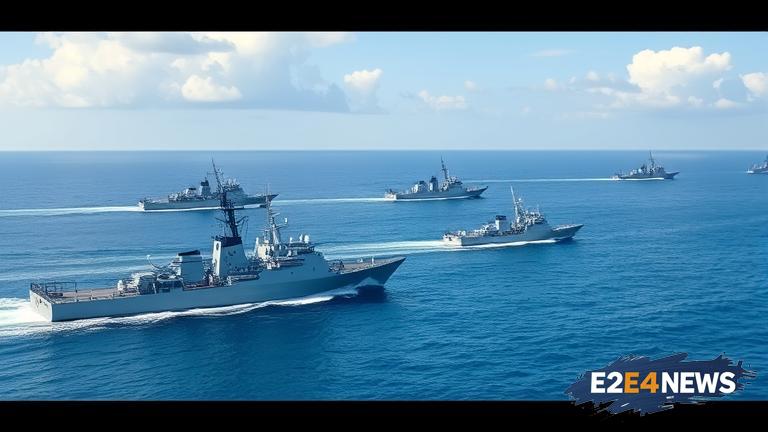In a move aimed at strengthening their maritime security ties, India and the Philippines have staged a joint naval drill in the disputed South China Sea. The exercise, which took place on August 8, 2023, was conducted by the Indian Navy’s guided-missile destroyer INS Delhi and the Philippine Navy’s patrol ship BRP Batangas. The drill was designed to enhance interoperability and cooperation between the two navies, with a focus on maritime security, search and rescue operations, and anti-piracy measures. The joint exercise was also seen as a demonstration of the two countries’ commitment to freedom of navigation and overflight in the South China Sea, which has been a major point of contention in the region. The South China Sea is a critical trade route, with over $3 trillion in trade passing through it every year. However, China’s aggressive claims to the region have raised concerns among other nations, including India and the Philippines. The joint naval exercise was conducted in the vicinity of the Spratly Islands, which are claimed by China, the Philippines, and other countries. The exercise was also attended by officials from the Indian and Philippine navies, who discussed ways to enhance cooperation and address common security challenges. The joint drill was part of a series of exercises conducted by the Indian Navy in the region, aimed at strengthening ties with other navies and promoting maritime security. The Indian Navy has been actively engaged in the region, with a focus on promoting freedom of navigation and overflight. The Philippines has also been seeking to strengthen its maritime security ties with other countries, including India, to counter China’s growing assertiveness in the region. The joint exercise was seen as a significant milestone in the bilateral defense cooperation between India and the Philippines, which has been growing in recent years. The two countries have been discussing ways to enhance cooperation in areas such as maritime security, counter-terrorism, and disaster response. The joint naval exercise was also seen as a demonstration of the two countries’ commitment to promoting peace and stability in the region. The exercise was conducted in a professional and safe manner, with both navies demonstrating their capabilities and expertise. The joint drill was also attended by observers from other countries, who were impressed by the level of cooperation and interoperability between the two navies. The exercise was seen as a positive development in the region, with many countries welcoming the move as a step towards promoting maritime security and cooperation. The joint naval exercise was also seen as a reflection of the growing strategic partnership between India and the Philippines, which has been driven by a shared commitment to promoting peace, stability, and prosperity in the region. The exercise was conducted in accordance with international law and norms, with both navies respecting the sovereignty and territorial integrity of other nations. The joint drill was also seen as a demonstration of the two countries’ commitment to promoting freedom of navigation and overflight, which is essential for global trade and commerce. The exercise was a significant milestone in the bilateral defense cooperation between India and the Philippines, and marked a new era of cooperation and collaboration between the two navies.





